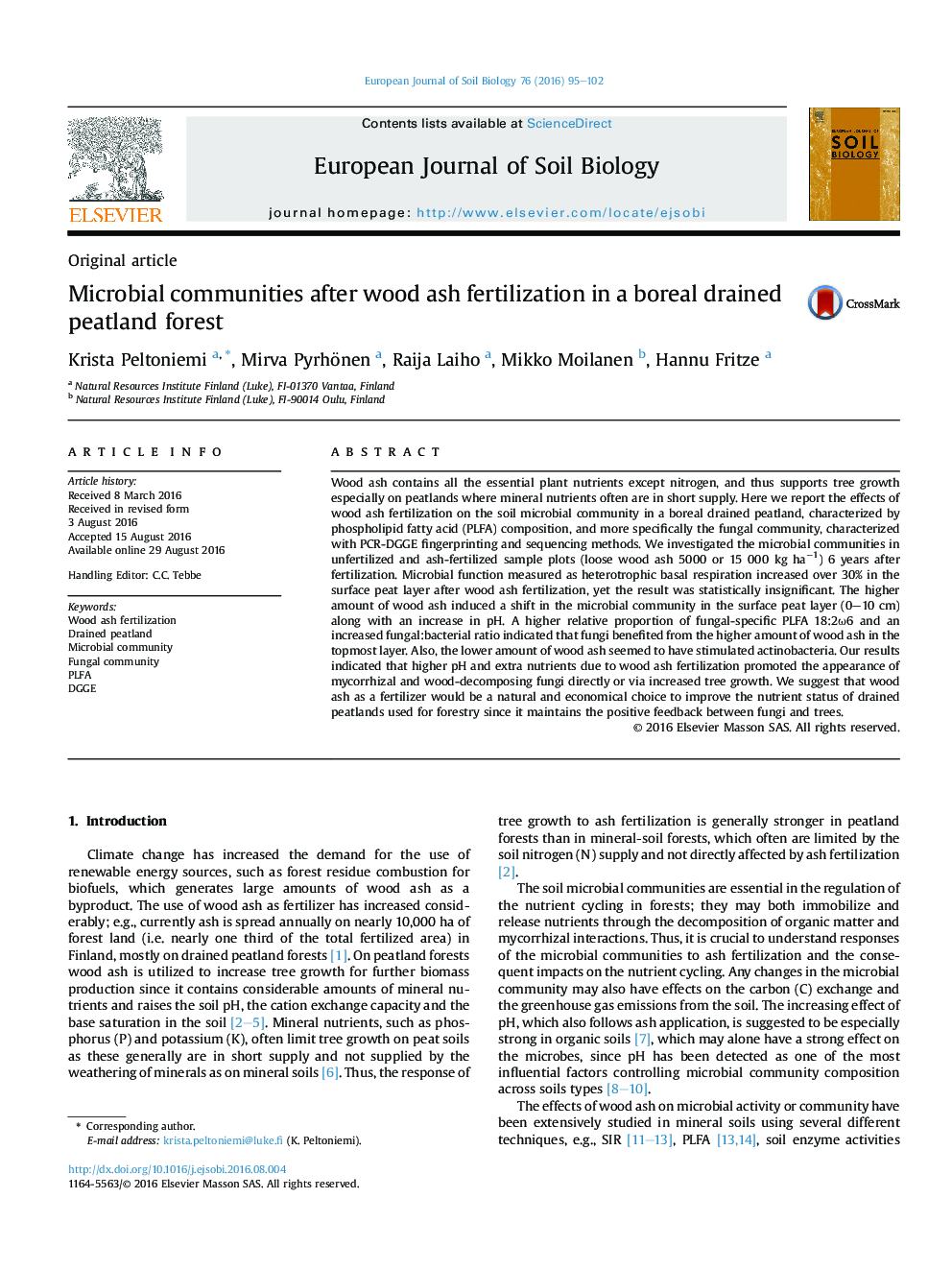| کد مقاله | کد نشریه | سال انتشار | مقاله انگلیسی | نسخه تمام متن |
|---|---|---|---|---|
| 4391676 | 1618116 | 2016 | 8 صفحه PDF | دانلود رایگان |
• Microbial activity did not change in a peatland forest 6 years after wood ash fertilization.
• Microbial shift was detected in peat soil between lower and higher dose of wood ash.
• Mycorrhizal and wood-decomposing fungi benefit from wood ash fertilization.
• First time the impact of wood ash on fungi in boreal peatland forest is reported.
Wood ash contains all the essential plant nutrients except nitrogen, and thus supports tree growth especially on peatlands where mineral nutrients often are in short supply. Here we report the effects of wood ash fertilization on the soil microbial community in a boreal drained peatland, characterized by phospholipid fatty acid (PLFA) composition, and more specifically the fungal community, characterized with PCR-DGGE fingerprinting and sequencing methods. We investigated the microbial communities in unfertilized and ash-fertilized sample plots (loose wood ash 5000 or 15 000 kg ha−1) 6 years after fertilization. Microbial function measured as heterotrophic basal respiration increased over 30% in the surface peat layer after wood ash fertilization, yet the result was statistically insignificant. The higher amount of wood ash induced a shift in the microbial community in the surface peat layer (0–10 cm) along with an increase in pH. A higher relative proportion of fungal-specific PLFA 18:2ω6 and an increased fungal:bacterial ratio indicated that fungi benefited from the higher amount of wood ash in the topmost layer. Also, the lower amount of wood ash seemed to have stimulated actinobacteria. Our results indicated that higher pH and extra nutrients due to wood ash fertilization promoted the appearance of mycorrhizal and wood-decomposing fungi directly or via increased tree growth. We suggest that wood ash as a fertilizer would be a natural and economical choice to improve the nutrient status of drained peatlands used for forestry since it maintains the positive feedback between fungi and trees.
Journal: European Journal of Soil Biology - Volume 76, September–October 2016, Pages 95–102
